Orono Farmers' Market |

The canopies, or “tents”, that most of us use at market will shelter us—and sometimes our products and customers—from the hot sun and rain. They are the first item members set up when they arrive at market. However all tents are susceptible to being blown over on windy days. Some members anchor them only on the two corners next to their vehicles, but on a windy day this is not enough. Some members have neglected to anchor them at all when the day starts out calm. But a single sudden gust later in the day can can turn a good market day into one you'd sooner forget. This is why the market adopted a rule in 2010 that all tents must be securely anchored every day. This page displays some of the devices market members use to weight down their tents. There seems to be three basic common types: water jugs, concrete weights, and iron weights, and the photos below are grouped accordingly. See also "Notes on Tying Down Your Tent" at the bottom of this page. |
WaterJugs of water are perhaps the simplest and least expensive to create. They are easy to stick in odd corners of the market vehicle, don't mar items they are packed against, and at around 8½ pounds per gallon, provide significant anchoring if a large enough jug is used. Although a single gallon is not enough for any but the lightest winds, it does provide some anchoring, and multiple jugs can be used at each corner. To create a heavier jug, fill it with sand before filling it with water. But beware that plastic will photodegrade eventually, so be prepared for the day when your water jug breaks apart. Truly heavy water weights, such as 5 gallon buckets (~45 lbs. each), tend to be large and may be obtrusive in your display area. From left to right, Snakeroot ('07), Living Earth ('07), Argyle Acres ('07), and Mineral Springs ('06). 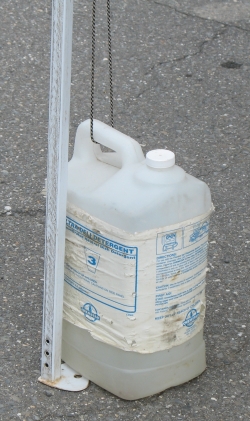


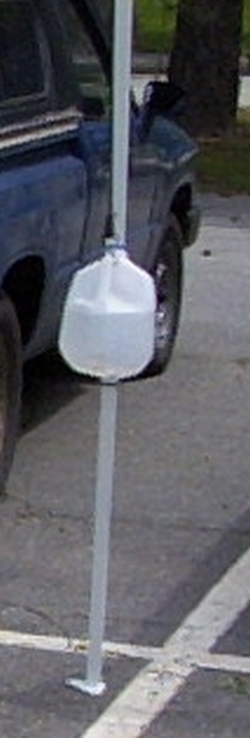
IronIron is the heaviest weight for its volume, so iron weights can be small yet very heavy. Custom construction my a metal shop can create a slot that fits neatly around the tent leg and install a lifting handle. These designs tend to run into the hundreds of dollars for a set of four, and weight 40-50 lbs. each, are fairly unobstrusive in use, and will last practically forever. As you can see, in a pinch almost any piece of iron will fill the bill. From left to right, Freyenhagen ('07), Peacemeal ('07), and ?? ('07) 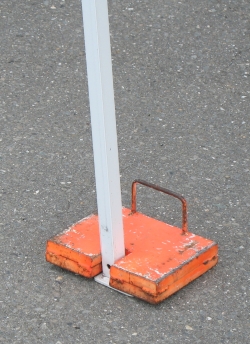

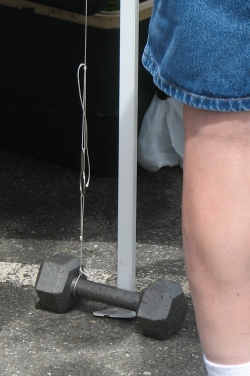
ConcreteMany members use the old reliable concrete block in one of its many forms, while others prefer a more custom designed approach for better looks and ease of handling. Because concrete is heavy, it makes a good anchor. It can be made into almost any form, allowing full sway to the member's creativity. Note that if using a plastic bucket as a form for your contrete weight, the anchor bolt, and not the much weaker bucket handle, should be where you tie down. The plastic-pumpkin-full-of-concrete weights were made by Argyle Acres' Galen Young, who offers them for sale. In the late fall, pumpkins-wieghts can get confusing! From left to right, ?? ('07), ?? ('07), ?? ('07); second row: Cornerstone ('07), Meadowsweet ('07), Wickett ('07); third row: Freedom ('07), Worcester ('07), Argyle Acres ('07); fourth row: Argyle Acres ('07), Fail Better ('08). 
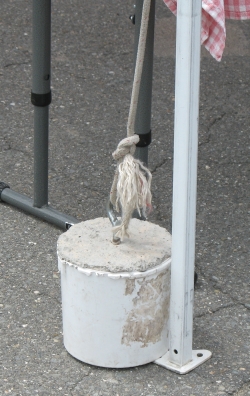
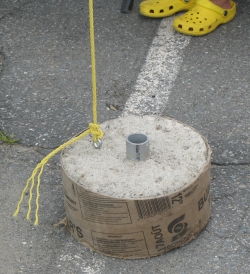
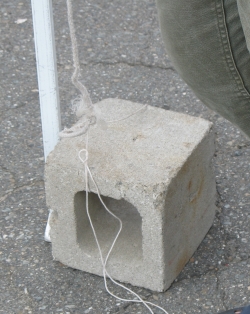



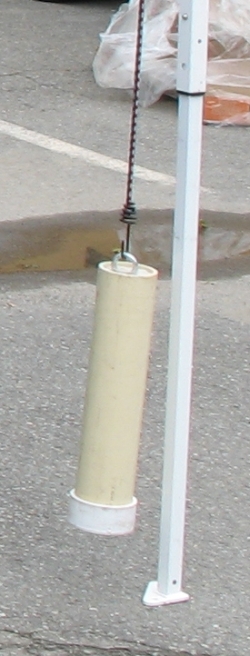

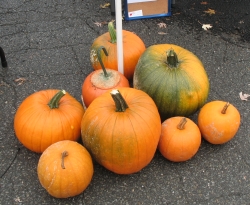

MiscellaneousIf your display table is loaded with heavy products at the start of the day, tying your tent to the table is a tempting solution. But if the day's sales are good, or if your products are light, a sudden gust could bring you double trouble. Rocks can certainly be heavy enough, and have a definite "home made" look, but require a relatively long time to properly tie at each market and can be awkward to lift and pack in the vehicle. From left to right, ?? ('07), Barkwheats ('08). 
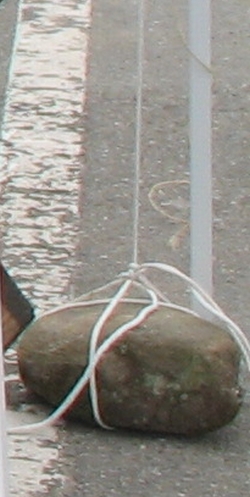
Notes on Tying Down Your Tent.
|




